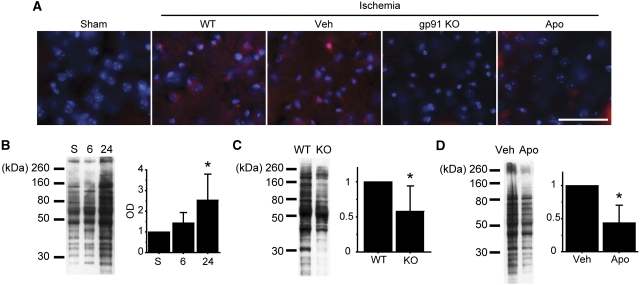Figure 5.
Nicotinamide-adenine dinucleotide phosphate (NADPH) oxidase (NOX) inhibition attenuated oxidative injury after transient global cerebral ischemia (tGCI). (A) Representative photomicrographs of in situ detection of superoxide anion production. In the wild-type (WT) mice, ethidium signals (red) increased diffusely after ischemia; however, this increase was attenuated by NOX inhibition. Nuclei were counterstained with 4′,6-diamidino-2-phenylindole (DAPI) (blue). Scale bar=50 μm. (B) Quantitative evaluation of oxidative protein damage by detection of the carbonyl groups introduced into proteins. The level of the carbonyl groups significantly increased 24 hours after tGCI compared with the nonischemic brains in the nontreated animals (n=8, *P<0.05). (C, D) Increases in the carbonyl groups significantly decreased in the gp91 knockout (KO) and apocynin-treated mice compared with the WT and vehicle-treated mice (n=6, *P<0.05). Apo, apocynin; OD, optical density; Veh, vehicle.

